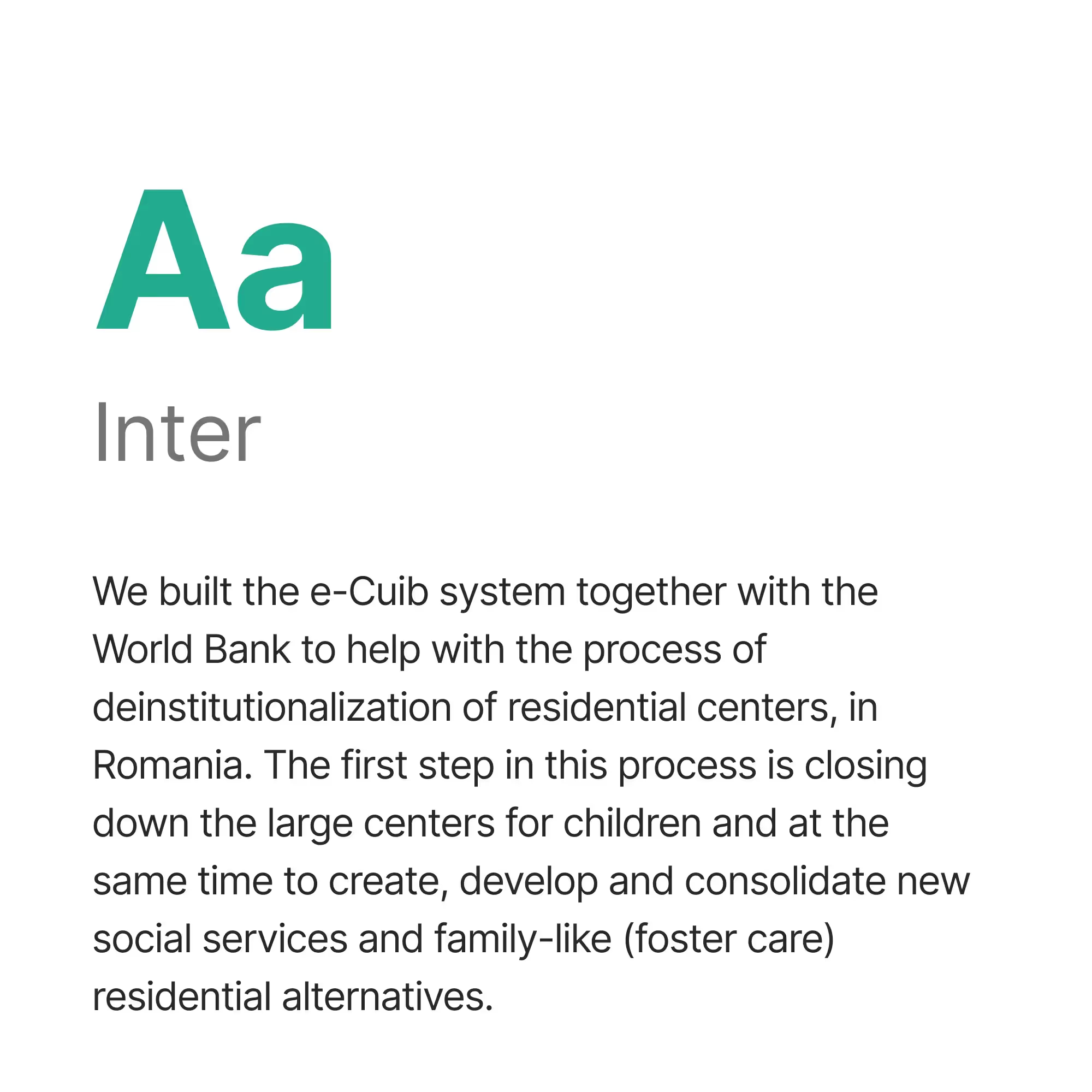We built the e-Cuib system together with the World Bank to help with the process of deinstitutionalization of residential centers, in Romania. The first step in this process is closing down the large centers for children and at the same time to create, develop and consolidate new social services and family-like (foster care) residential alternatives.
The main objective is to improve the situation of the children and teenagers who are living in large residential centers. They must not be closed down before there are better alternatives for children and teenagers. These solutions include reintegration with their families (where possible), placement with a professional maternal assistant, or in small-scale residential services (family like houses or apartments).
In Romania, there is an ongoing process to deinstitutionalize large residential centers for children and integrate them into small, foster care houses, and into society. This process is financed by institutions such as the European Union.
budget for closing down centers
children evaluated
large residential centers, in the process of closing down, with the support from e-CUIB
Emil Daniel Tesliuc
Senior Economist, Social Protection & Jobs @ The World Bank

The challenges we’ve come across while developing e-Cuib:
Product Challenges:
Tech Challenges:
For this project, eCuib, we had to collect huge amounts of data, on different dimensions, such as children data (medical, social, family, education), residential center data (current situation, personnel), and establish the closing down plan (steps, financial data). The next step has been to automate the process as much as possible: pre-fill information and remove redundancy. We created multiple persons and roles involved in the data collection process and created a self-managed platform. In the end, we handed over the solution to the government of Romania.
The objective of our client, The World Bank, and their partners, was to generate a comprehensive and complete closing-down plan that included reports about the situation in the large residential centers and the children living there.

The e-CUIB platform takes advantage of technology to implement a software product that benefits the users of e-CUIB: residential center supervisors, residential center personnel, and also data collection consultants, by simplifying and accelerating the data collection process.


The e-CUIB platform is easy to use, it offers progress feedback to the users and automates repetitive tasks as much as possible.

The objective of our client, The World Bank, and their partners, was to generate a comprehensive and complete closing-down plan that included reports about the situation in the large residential centers and the children living there.
The e-CUIB platform takes advantage of technology to implement a software product that benefits the users of e-CUIB: residential center supervisors, residential center personnel, and also data collection consultants, by simplifying and accelerating the data collection process.
The e-CUIB platform is easy to use, it offers progress feedback to the users and automates repetitive tasks as much as possible.
The software automatically generates the closing down plan (~400 pages), together with complete and comprehensive reports about the residential center and the children living there.





For each flow in Medicai, we develop user flow diagrams just like this one to help us understand what the optimal user journey looks like.




The Medicai Design System provides a unified component base for both designers and developers to ensure consistency throughout all products.


Medicai's DICOM viewer supports all imaging types, provides efficient storage, and allows seamless access to medical images from any device, including mobile ones through the Medicai Mobile app, enhancing real-time collaboration and patient care.
Below you can play with Medicai’s DICOM Viewer directly embeded in our website. Inside the viewer, you can see a MRI imaging study.

User research to better understand the users and the procedures including user interviews
User experience design, covering the journey of a user in the system
User interface design, branding, and the design system behind all the e-Cuib software components

Software engineering for the backend systems, the web apps: Java with Spring Framework, Angular.JS
Data engineering and Big Data.
Quality Assurance services and Continuous Monitoring solutions to make sure the uptime of the platform is close to 100%

System architecture, orchestrating multiple server-side components with several frontends: web app, back office, and reporting tool.
DevOps Services: Our DevOps team manages deployment across both on-premise and cloud environments, ensuring scalable and reliable performance.